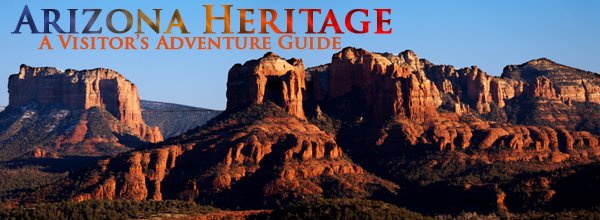 In an undated brochure going back probably to the nineteen-teens, Santa Fe Railway offered up tips to the tourists who used their lines -- and most tourists in those days still used the railroad for trips beyond the immediate environs -- on what to see while in the Southwest.
In an undated brochure going back probably to the nineteen-teens, Santa Fe Railway offered up tips to the tourists who used their lines -- and most tourists in those days still used the railroad for trips beyond the immediate environs -- on what to see while in the Southwest.Called "Off the Beaten Path in New Mexico and Arizona," the brochure suggested a variety of sidetrips, mostly north of the railway line, which ran through Santa Fe and Flagstaff. For the most part, it was designed to take the visitor into Indian country, calling it "both the oldest and the newest region in the United States."
The brochure told the tourists that they could make a 72-mile round trip, for example, by automobile and could go "there and back in a day." But the railway also offered trips by "saddle and pack" which lasted as much as 30 days, all the while camping out in the wilderness.
One of those 30-day horseback trips (which cost $300, including everything except the railway ticket) went through Canyon de Chelly (say "canyon duh shay") in the extreme eastern part of northern Arizona. Another trip, this one for four days in a Ford automobile, also took in the canyon and cost $120.
Canyon de Chelly is entirely within the Navajo Reservation in Arizona. It's about 40 miles long and has red sandstone walls that rise, mostly vertically, 800 to 1,500 feet. As the brochure said, "on either side are pinnacles, crags and towers of great height, sculptured by wind and rain."
Before the Navajos came to the area, the canyon was home to the Anasazi and scores of their cliff dwellings can be found in high crevices along the rock walls. "Thousands of peach trees, planted by the early Spaniards, still produce fruit for their Navaho owners. There are Navaho Indians living in these canyons in the same primitive fashion that they lived a century ago, when the
Spaniards first came."
Today, Canyon de Chelly is still a tourist destination. It's both reservation and a national monument. It is unique among sites run by the National Park Service in that it also is a residential area. There is a road around the rim of the canyon that is free to drive, as is the White House ruins trail; to enter the canyon at the bottom, however, one must hire a Navajo guide. (You also need a four-wheel-drive vehicle and a Park Service permit.)
As well as driving through, the canyon today offers hiking, rock-art viewing, interpretive exhibits and talks, horseback riding, picnicking and photography, according to the Park Service. Come to think of it, that's not a lot different from a century earlier.
Before you go, there's plenty to learn.




No comments:
Post a Comment